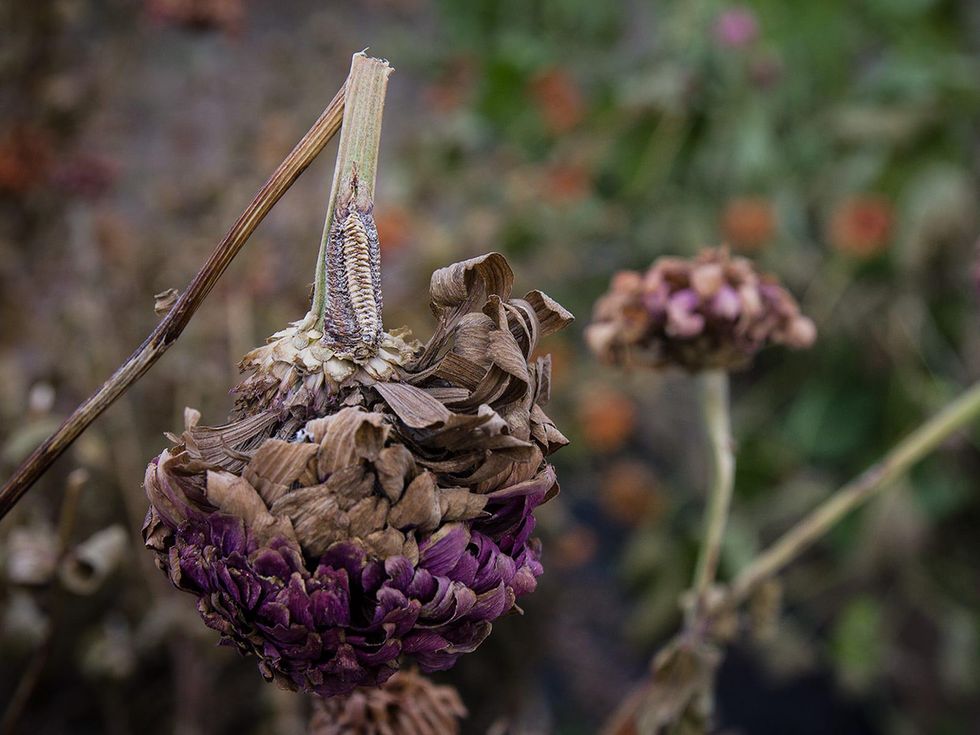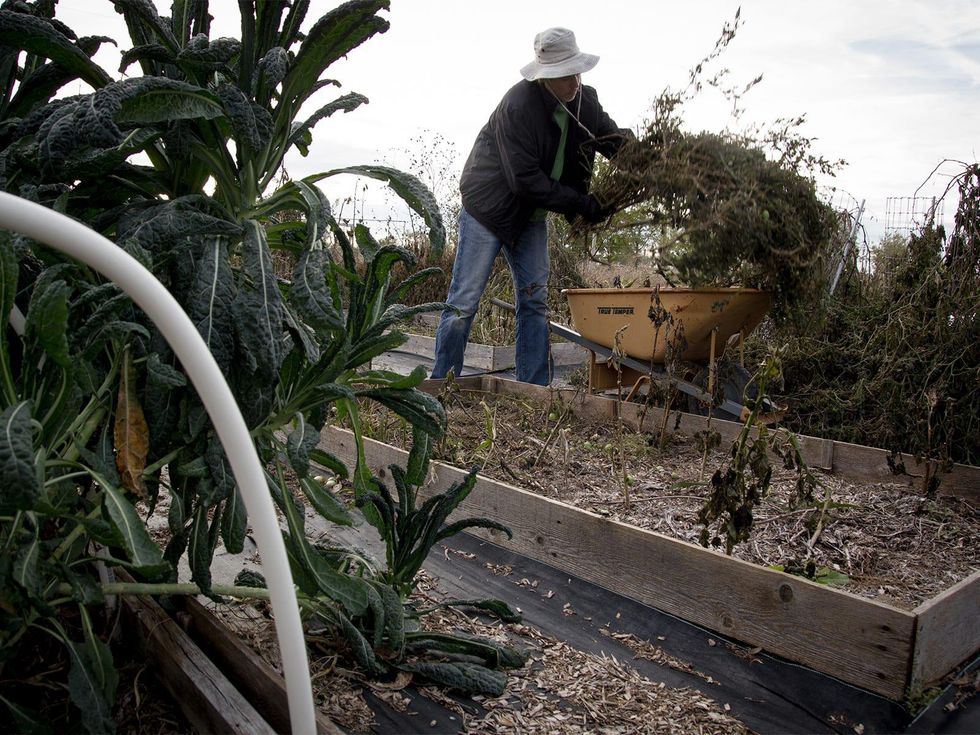The Farmer Diaries
North Texas farmer grapples with aftermath of November freeze
As forecast, North Texas experienced its first hard freeze on November 12. And despite my good intentions, it put an end to my summer crops.
I had my own forecast: Even if I'd applied covering, I feared that nothing short of heaters would have kept my warm-season plants alive. The cost to protect so many plants for just a few more weeks of produce didn't seem worth it. At the last minute, I chose not to protect my garden.
The tomatoes, squash, pumpkins, okra, cucumbers, cotton, beans, peppers and basil — which only the day before were still flowering, fruity and green — are now black, wilted and dead.
Time for the cleanup. I don't waste a minute. I move dead plants to the compost bin right away so that their tissue can begin to break down immediately. They're full of organic matter and minerals. Getting them in the bin ensures that by spring, I'll have a pile of dark brown compost that beats anything sold in stores.
I try to recover egg cases and sacks left behind by praying mantises and spiders. They've done such an effective job in helping combat pests that I want to make sure their young ones come back next year.
Saving my friends
First, before I start the tear-down, I try to recover egg cases and sacks left behind by praying mantises and spiders. They've done such an effective job in helping combat pests that I want to make sure their young ones come back next year.
Over the years, I've formed a sort of memory map of where I've seen beneficial insects and spiders. They seem to pick a good spot in the garden and stick to it, just like people do in neighborhoods. In one spot is the garden spider who lived on the trellis behind the Nichol's Estate tomatoes; in another, the praying mantis who always scouted for bugs on the zinnias, and so on.
Spider egg sacks are the easiest to find. These balls of tightly spun web — as small as a pea or large as a golf ball depending on the species — are usually hung near the web, almost always under protective plant growth or the eave of a house.
Praying mantis egg cases are more elusive and difficult to describe. The praying mantis in my bed of zinnias chose the underside of a large, purple flower to place her eggs in what looks like a growth with scales, about an inch long and as big around as a pencil.
Once I locate their eggs, I put them in a paper bag that I leave unsealed, in case the eggs hatch before I expect them to. If they do hatch early, the little ones can still go where they need to. For this reason, I keep them outdoors — I prefer not to have a living room full of huge black and yellow spiders.
Once I plant new crops next year, I place the egg casings and sacks among them. They'll hatch when the time is right.
Tidying up
After sparing the next beneficial insect generation, I pull up or tear down the dead plants. If the roots are set firmly in the ground, as with tomatoes, I'll sever the trunk from the roots with pruning sheers, right at ground level. This allows me to remove the bushy growth more easily, and the roots will quickly rot in the soil.
As I place plant matter in my compost bin, I create layers of plant tissue and ripe compost from a mature pile. To do this, I alternate a foot-high layer of plant matter with about four inches of brown compost.
I move dead plants to the compost bin right away so that their tissue can begin to break down immediately. They're full of organic matter and minerals.
Layering new and old plant matter this way hastens the breakdown of the new material so that it's ready to use in the garden in about three months. Without such layering, plants can take a year or more to break down into compost.
To feed birds through the winter, sunflowers, sorghum and any other seed crop can stay where they are. Seed-eating birds such as mourning doves eat huge quantities of seeds. Attracting them to the garden is a sure way to get weed seeds out from the raised beds before they can germinate. What's more, doves do not scratch the ground for seeds, so crop seeds that I plant are safely out of reach.
In some of my raised beds, and especially in the open field where traditional row crops will be planted, I'll plant a temporary cover crop of hairy vetch. Hairy vetch grows well in colder temperatures and competes with winter weed, thus reducing their numbers.
As a legume, it harbors a bacteria that takes nitrogen from the atmosphere and fixes it to the root zone where it will be available to nourish next spring's crops — hence the term "nitrogen-fixing crop" that's often used to describe some cover crops.
Although much of my garden has been killed, gardening is not over for the year. Still alive and healthier than ever are kale, collard greens, carrots, rutabagas, turnips, Swiss chard and cilantro. Half of my raised beds are full of these cool-season plants — robust, lush and green.
Because of them, I'll continue to have an alternative to the grocery store produce aisle, yards away from where I live.
Having the summer plants out of the way is kind of a relief. They no longer require my daily care, giving me time to repair raised beds, install a more durable irrigation system and finally get around to experimenting with hydroponics, something that promises a year-round harvest no matter what the weather brings our way.





